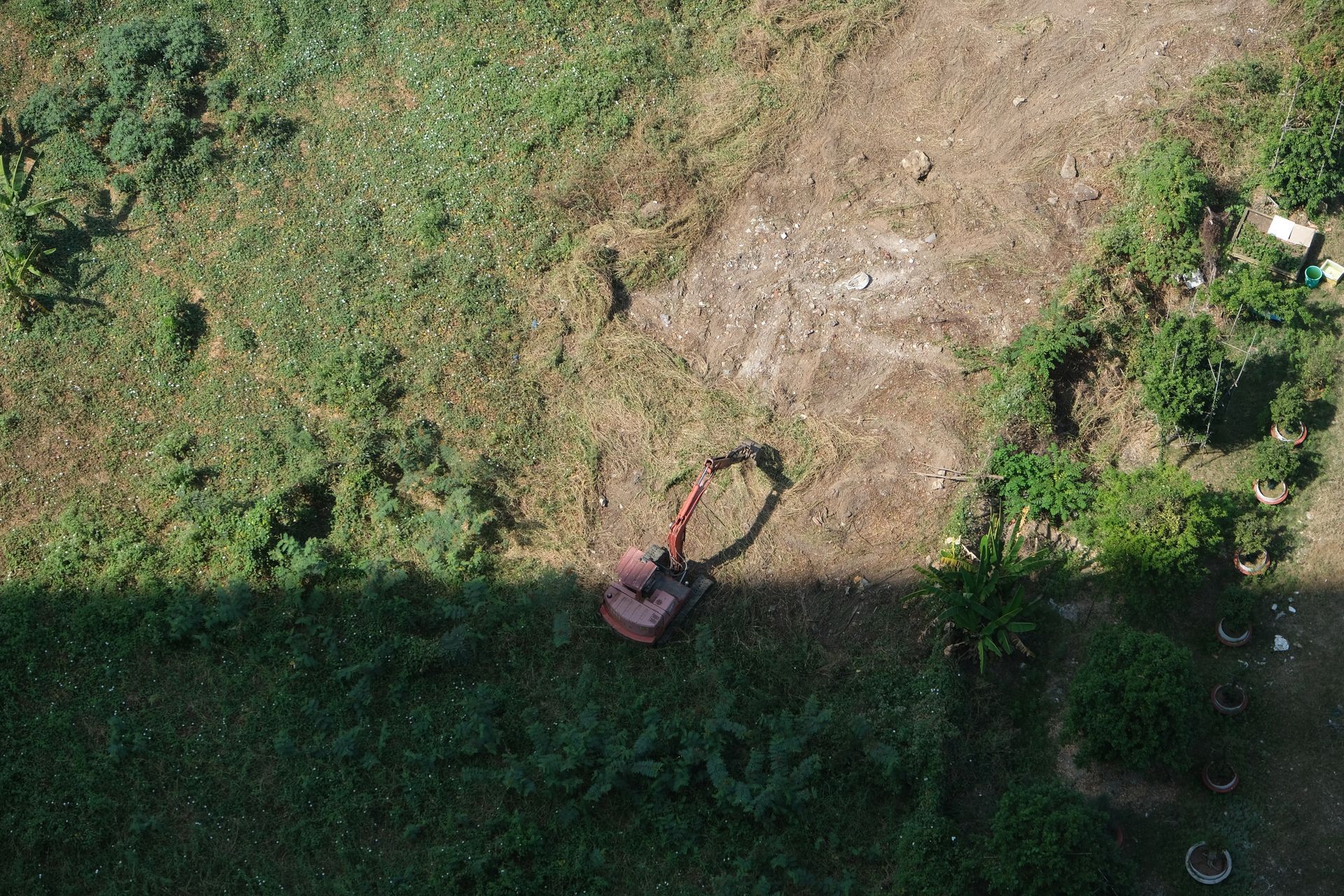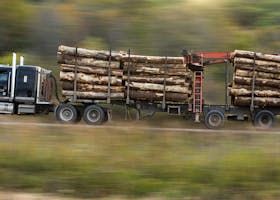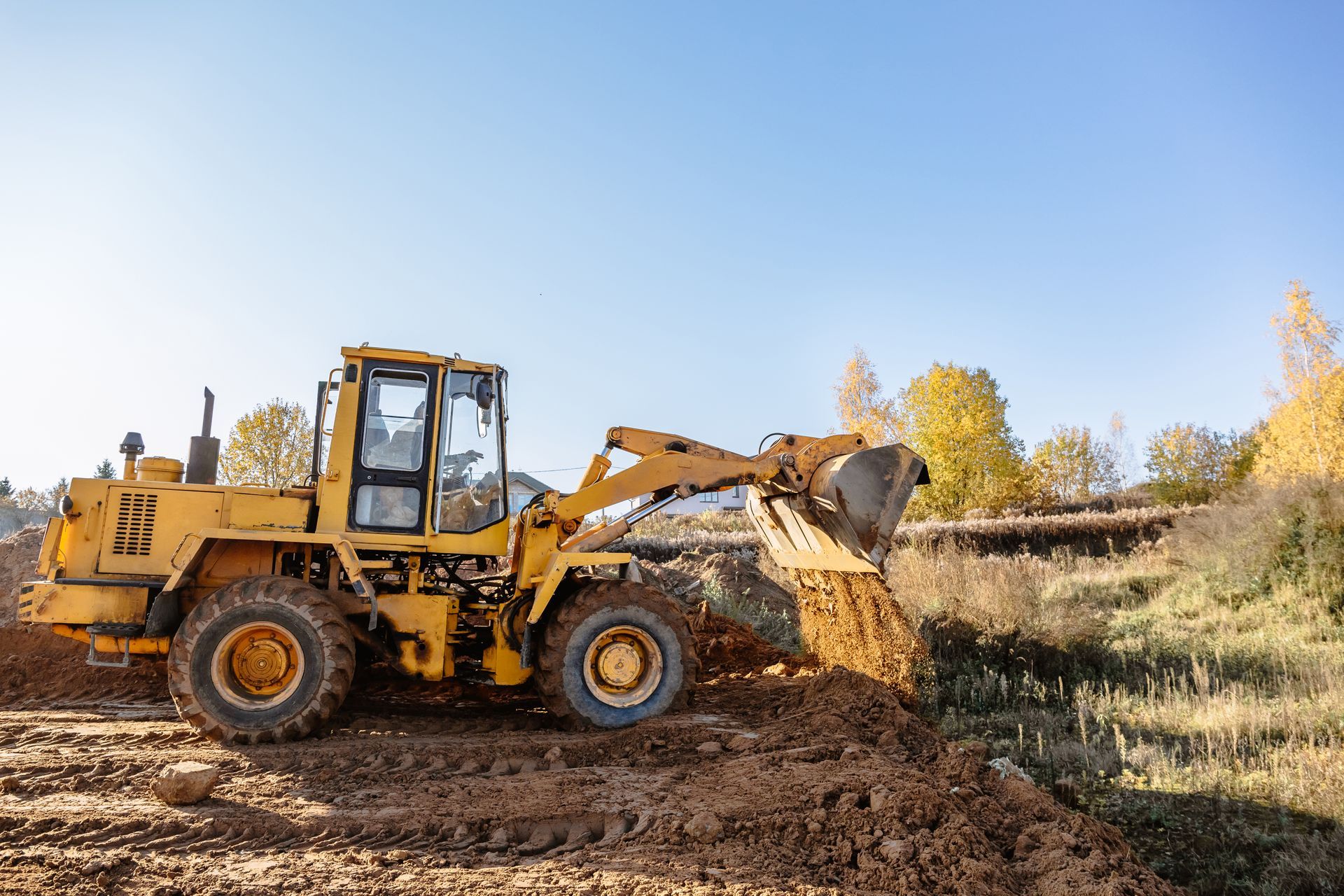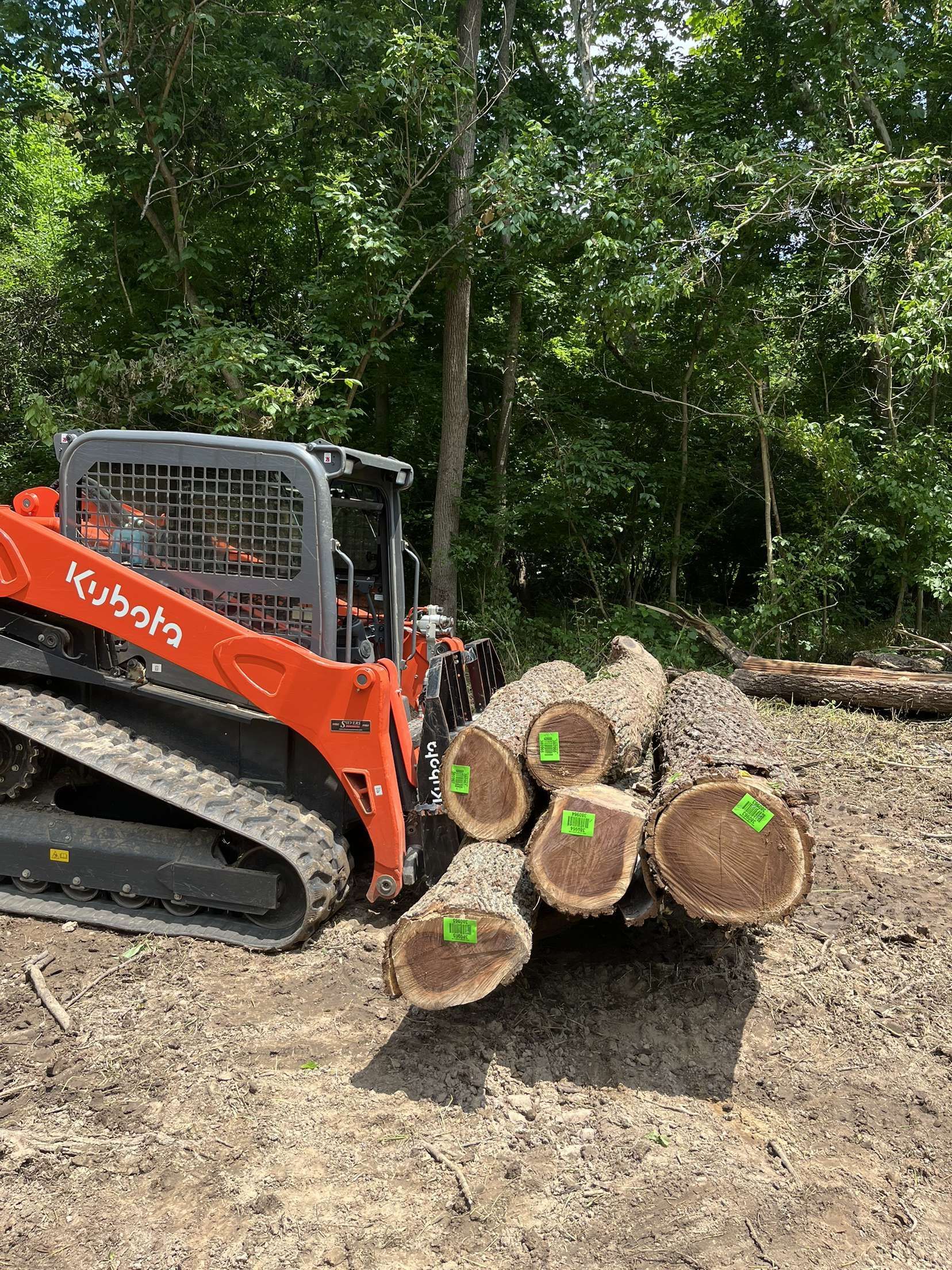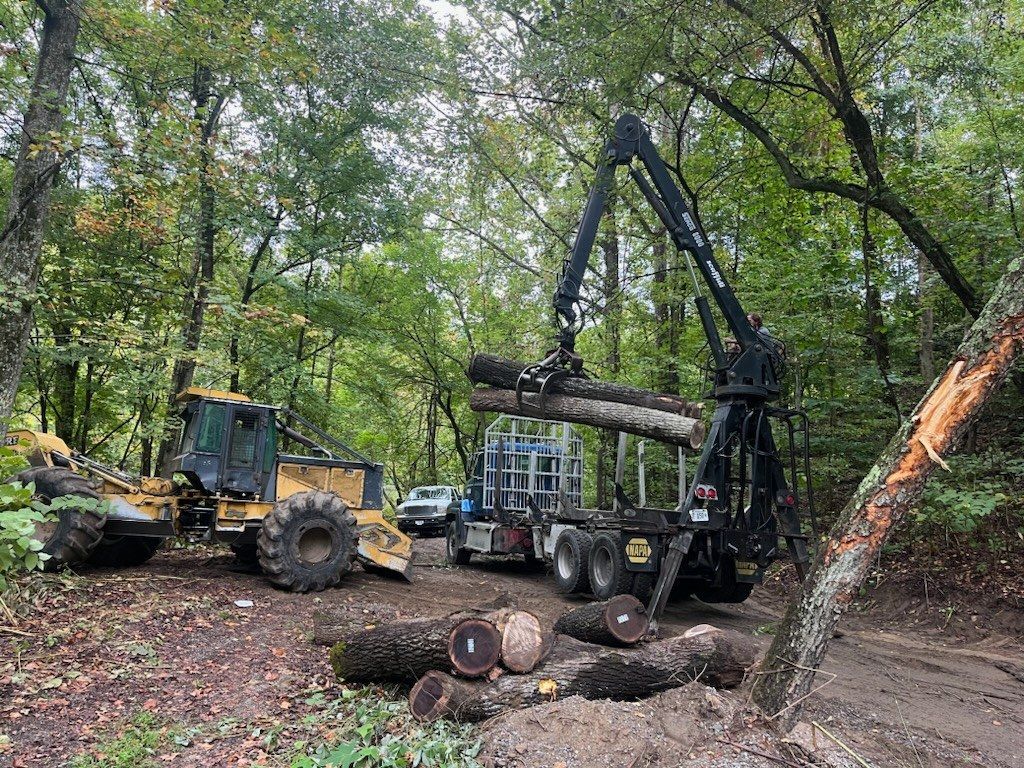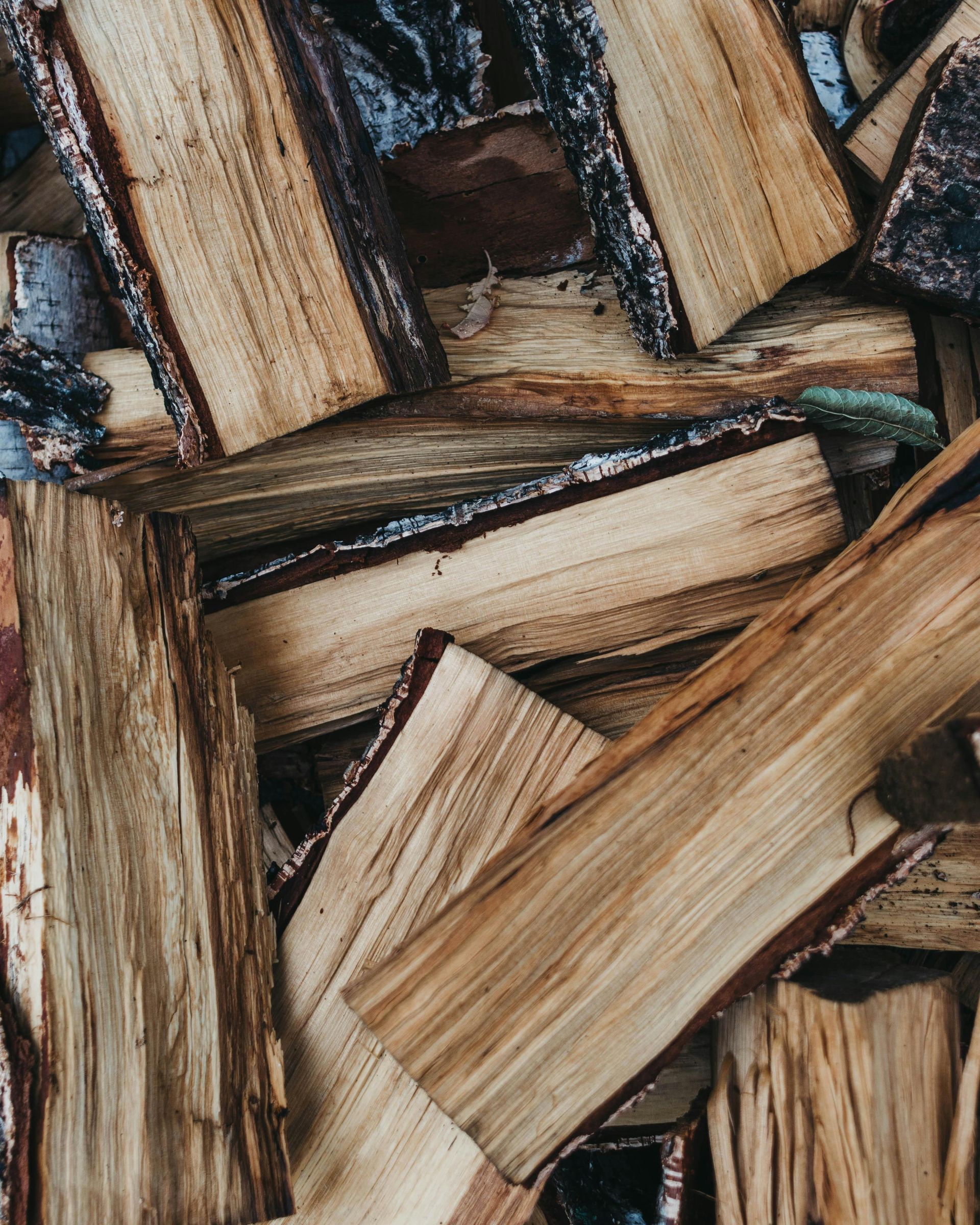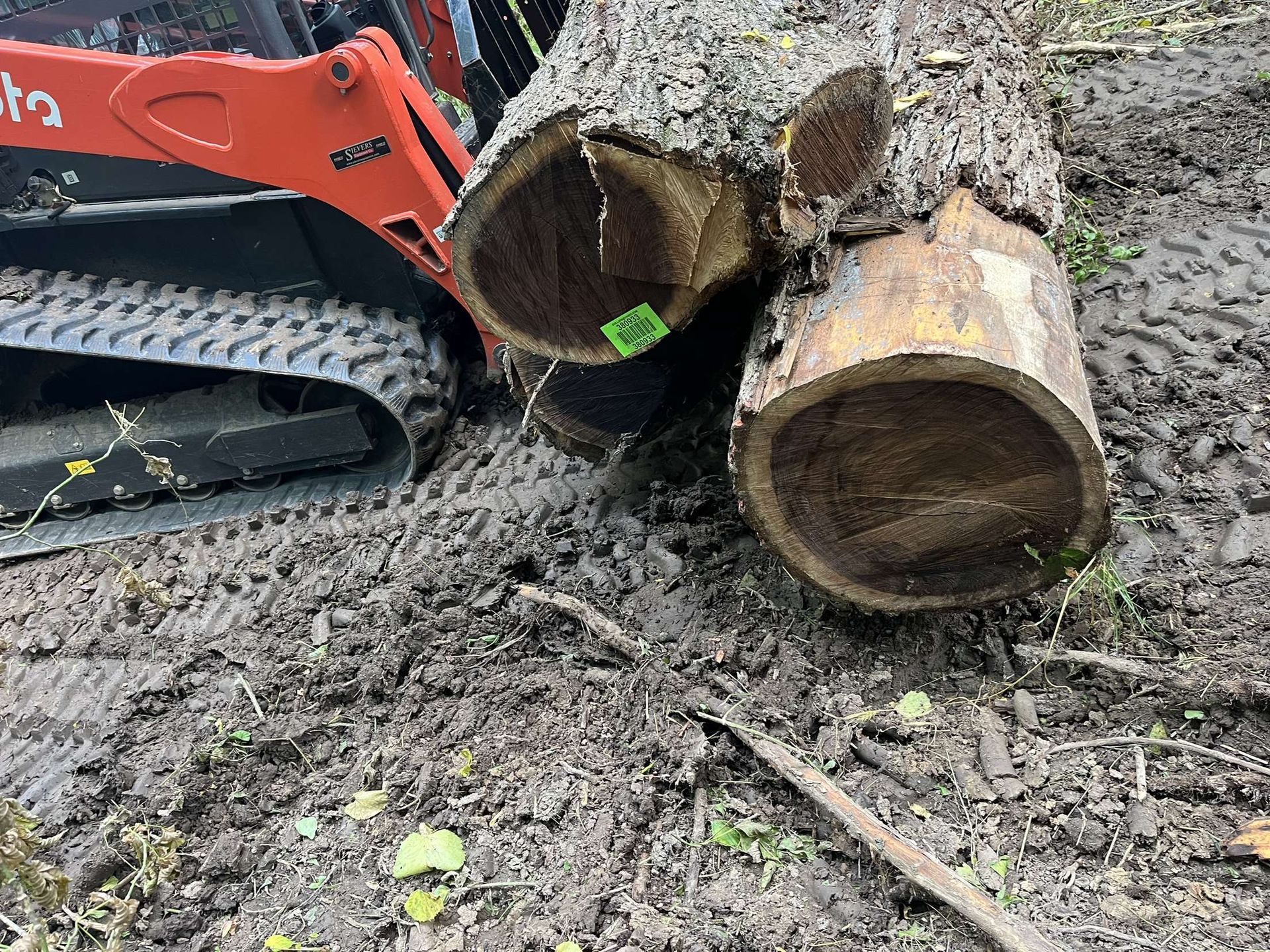Sustainable Walnut Timber Harvesting Practices for Illinois Landowners
As an Illinois landowner, your walnut trees are more than just a potential payday—they’re part of a living ecosystem that supports biodiversity, soil health, and long-term land value.
Black walnut (Juglans nigra), prized for its rich heartwood and high market value, thrives across Illinois, from the fertile bottomlands of the Mississippi River to the rolling hills of Sangamon County. With walnut stumpage prices in 2025 averaging $1,628 per thousand board feet (MBF) and veneer logs fetching up to $3,650/MBF, sustainable harvesting ensures you maximize profits while preserving your forest for future generations.
At Grade Timber, a trusted walnut timber buyer in Illinois, we prioritize eco-friendly practices that align with state regulations and landowner goals. This comprehensive guide explores sustainable walnut harvesting methods, their benefits, and how to implement them, positioning Grade Timber as your expert partner for environmentally responsible timber sales.
Whether you’re in central or southern Illinois, sustainable harvesting not only protects your land but also enhances its appeal to eco-conscious buyers searching for “sustainable walnut timber buyer IL.” Let’s dive into the practices, regulations, and strategies that make walnut harvesting both profitable and planet-friendly.
Why Sustainable Harvesting Matters for Walnut Timber
Sustainability in timber harvesting means balancing economic gain with ecological health. Black walnut, a slow-growing hardwood native to Illinois, takes 50-80 years to reach marketable size, making thoughtful management critical.
Unsustainable practices—like clear-cutting—can deplete forests, erode soils, and disrupt wildlife habitats, reducing future timber yields and land value.
In contrast, sustainable methods maintain forest ecosystems, support carbon sequestration, and qualify landowners for incentives under programs like the Illinois Forestry Development Act (IFDA).
For walnut specifically, sustainability is key due to its high value and ecological role. Walnut trees provide food for wildlife (e.g., squirrels), shade for understory plants, and natural pest resistance via juglone, a chemical that suppresses competing vegetation.
Overharvesting risks invasive species like honeysuckle, which thrive in disturbed areas, while proper methods promote forest resilience.
In 2025, with walnut demand strong due to a recovering housing market and export growth, sustainable practices ensure Illinois landowners meet market needs without sacrificing long-term productivity.
Sustainable Walnut Harvesting Practices in Illinois
At Grade Timber, we employ proven techniques to harvest walnut timber sustainably, tailored to Illinois’ diverse landscapes. These methods, backed by certified master loggers, minimize environmental impact while maximizing timber value.
1. Selective Cutting for Targeted Harvests
Selective cutting targets mature, high-value walnut trees (typically 20+ inches DBH) while leaving younger trees and other species to grow. This method:
- Preserves Canopy Cover: Maintains shade to prevent soil erosion and support understory plants.
- Boosts Regeneration: Opens space for new walnut seedlings, which need partial sunlight to thrive.
- Increases Value: Focuses on premium veneer logs, which can fetch $3,232-$5,000/MBF in 2025.
For example, in a 10-acre stand in Cass County, we might harvest 10-15 mature walnuts, leaving 80% of the forest intact to ensure future yields.
2. Low-Impact Logging Techniques
Low-impact logging reduces soil compaction and damage to residual trees. Key practices include:
- Winter Harvesting: Frozen ground in Illinois winters (January-February) minimizes soil disturbance, ideal for walnut-rich bottomlands.
- Directional Felling: Trees are felled to avoid damaging nearby saplings, using precise cuts guided by certified loggers.
- Skid Trail Planning: Designated trails limit soil disruption, with mats or logs used to protect sensitive areas like streams.
Grade Timber’s equipment, like low-ground-pressure skidders, ensures minimal footprint, preserving soil for future walnut growth.
3. Post-Harvest Reforestation
After harvesting, replanting walnut seedlings or encouraging natural regeneration is vital. The IFDA offers cost-share programs (up to 75% of planting costs) for reforestation, with walnut prioritized due to its value.
Steps include:
- Planting 200-300 seedlings per acre in harvested gaps, using genetically superior stock for faster growth.
- Controlling invasives like bush honeysuckle with selective herbicides, preserving walnut’s competitive edge.
- Monitoring soil health to prevent erosion, especially in southern Illinois’ flood-prone areas.
4. Wildlife and Habitat Protection
Walnut forests support species like deer, turkeys, and songbirds. Sustainable harvesting:
- Retains snags (dead trees) for nesting sites, per DNR guidelines.
- Preserves buffer zones around streams to protect aquatic habitats, critical in regions like the Ohio River watershed.
- Limits harvests to 20-30% of mature trees to maintain food sources (walnut nuts).
5. Compliance with Illinois Regulations
Illinois enforces strict rules under the Timber Buyers Licensing Act and IFDA to promote sustainability. Key requirements:
- Licensed Buyers: Only DNR-licensed buyers like Grade Timber can operate legally, ensuring accountability.
- Harvest Plans: Detailed plans outline tree selection and erosion controls, submitted to DNR for approval.
- 4% Harvest Fee: Funds forestry programs, with buyers reporting by March 1 annually.
Non-compliance risks fines or land degradation, underscoring the need for a trusted partner.
Benefits of Sustainable Walnut Harvesting
Adopting these practices yields multiple advantages:
- Economic Gains: Selective cutting maximizes high-grade log value, with a single veneer tree potentially worth $3,000-$5,000.
- Land Value Preservation: Healthy forests maintain property appeal, critical in Illinois’ competitive real estate market.
- Environmental Impact: Carbon sequestration continues, with mature walnuts storing 1-2 tons of CO2 each.
- Incentives: IFDA cost-shares and tax breaks under the Illinois Timber Tax program reduce costs.
- Market Appeal: Eco-conscious buyers and mills prefer sustainably sourced walnut, boosting demand in 2025’s export-driven market.
Illinois-Specific Considerations for Walnut Harvesting
Illinois’ diverse regions influence sustainable practices:
- Southern Illinois: Fertile bottomlands (e.g., Alexander County) support dense walnut stands but require careful erosion control due to flooding.
- Central Illinois: Mixed forests in counties like Sangamon benefit from selective cutting to maintain oak-walnut balance.
- Northern Illinois: Urban pressures near Chicago demand precise harvesting to avoid community backlash.
Winter harvesting is ideal statewide, as frozen soils reduce compaction, especially in wet southern regions.
Grade Timber tailors plans to your property’s unique ecology, ensuring compliance and sustainability.
Common Pitfalls to Avoid
Unsustainable practices can harm your land and profits:
- Clear-Cutting: Depletes forests, invites invasives, and lowers future yields.
- Unlicensed Buyers: Risk environmental violations and lowball offers.
- Ignoring Reforestation: Failing to replant reduces eligibility for IFDA incentives.
- Poor Timing: Harvesting in wet seasons compacts soil, harming roots.
Grade Timber mitigates these with expert planning and execution.
Why Choose Grade Timber as Your Sustainable Walnut Timber Buyer in Illinois
As a family-owned, DNR-licensed walnut timber buyer in Illinois, Grade Timber combines market expertise with a commitment to sustainability. Our certified master loggers use low-impact methods, and our free appraisals align with 2025’s rising prices.
We handle all logistics—permits, harvesting, reforestation—ensuring compliance and eco-friendly outcomes. Our track record across Illinois, from Beardstown to Carbondale, proves our dedication to landowners and forests alike.
Final Thoughts: Harvest Walnut Sustainably in 2025
With walnut prices strong and demand growing in 2025, sustainable harvesting is the smart choice for Illinois landowners. By prioritizing selective cutting, low-impact logging, and reforestation, you can profit while protecting your land.
Contact Grade Timber today for a free consultation—visit www.gradetimber.com or call to start your sustainable walnut harvest now.

